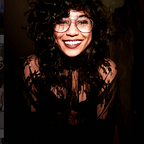Epiphanies of a novice UX explorer
Five months into my initiation into the world of digital design and my penchant towards the UX spectrum of design came as a recent realisation. Prior to pursuing design, I studied and practiced as a lawyer for 8 years. Although several parallels can be drawn in as far as how lawyers and designers are programmed to think, yet their ends and means to such ends are just as juxtaposed as their respective pay cheques. Through this article, I undertake to document and share lessons and sacred truths learnt via blunders, pressing challenges and erudition (but mostly blunders).
The erstwhile designer
Practicing law made me susceptible to developing certain personality traits which in design thinking would prove to be an impediment. Getting excessively defensive, un-founded assertiveness, obsessing over certainty, a “know — it — all” approach inter alia other attributes, hindered my growth as a designer.
My design process mostly involved conceiving an idea that would solve “x” issue, creating wireframes on paper and in conclusion, translating said wireframes into high-fidelity prototypes. Research was limited to validating the novelty of my idea and checking for any existing competition.
Does issue “x” even need solving? Is there even a demand for my conceived product? If yes, does it solve the problem? To what extent does it solve “x” problem? Do the end-users find it convenient to use? Is there scope for improvement?”
No part of my design process involved answering any of these pertinent questions. A negative response to any of the aforementioned questions is enough to overthrow any prototype, regardless of its fidelity level.
I was confined in a labyrinth of UI interfaces which I designed “for my eyes”. Just as far as two months ago, I would not have understood what the faux pas was with being a designer who designs to please oneself. A designer devoid of any orientation towards who she/he is designing for is akin to wrestling a dragon in the dark with a nerf gun.
The “AHA” moment
A “broadly defined, bordering on heavily obscure” client-assigned project was what it took for me to realize how blundered my approach to design was.
“Could you redesign these two pages for us?”
Stricken with a sizable number of unanswered questions and with nowhere to turn, I resorted to the client’s clients. Being deprived of any touch-points with the client is what pushed me to adopt a completely user-centred approach. Having the end-solution emanating from user needs and having it validated by the end-users, bolstered my design to new undiscovered heights, one which the client was hard-pressed to disagree with. Having my design being backed by user needs, user research and user validation was the skeletal framework, blood and flesh that held it up.
Taking the glass half full approach and stepping away from the many prejudices fine tuned into my legal professional fabric, I focussed on what of my legal practice brought me closer to design. As a lawyer, skills concerning communication, research, analysis, human behaviour, problem solving and judgement are indispensable. As a UX designer, skills concerning communication, research, analysis, human behaviour, problem solving and judgement are just as indispensable. The math did it itself . The methodology albeit distinct, but the underlying skillset is congruous. Adapting these traits and harmonising them to custom fit a UX designer’s profile is and continues being my primary focus.
Learnings and realisations
A design prototype substantiated with research, testing and validation keeping in mind the end-users, regardless of whether the author has a penchant for UI or UX is, in my understanding, makes for a “dynamic design”.
While it took me five months to understand how user research and testing goes hand in glove with prototyping and designing, it’s quite baffling to see how several seasoned product companies confine their respective product developments teams to UI designers and developers. Having the users involved in the process leading up to the product’s creation is no longer a matter of luxury or cost, but an indispensability. It’s one of the hallmarks of what makes or breaks any given product.
With great power comes great responsibility. Uncle Ben’s advice transcends all walks of life and design is no exception. To be able to design an experience/service/product implicitly empowers the designer to impact countless lives. Designing responsibly is paramount in the designer’s rule book. Excluding the end users in the process leading up to the product’s conception is an irreversible blunder that could easily uproot the product from the ground-up.
Design and user research are inseparable. It is high time we stop perceiving design as being confined to aesthetic templates on a screen and more as a discipline focused on creating methodical designs backed with holistic research and validation. I endeavour to pursue a design path laden with empathy and understanding, without compromising on user integrity as much as what circumstances allows me.
To all aspiring novice UX designers, including but not limited to those transitioning from other professions, I would love to hear your thoughts/lessons/stories of how you are undertaking your respective journeys. I hope this read helps you in someway!
Connect with me: www.linkedin.com/in/harita-sahadeva-aab2b050
